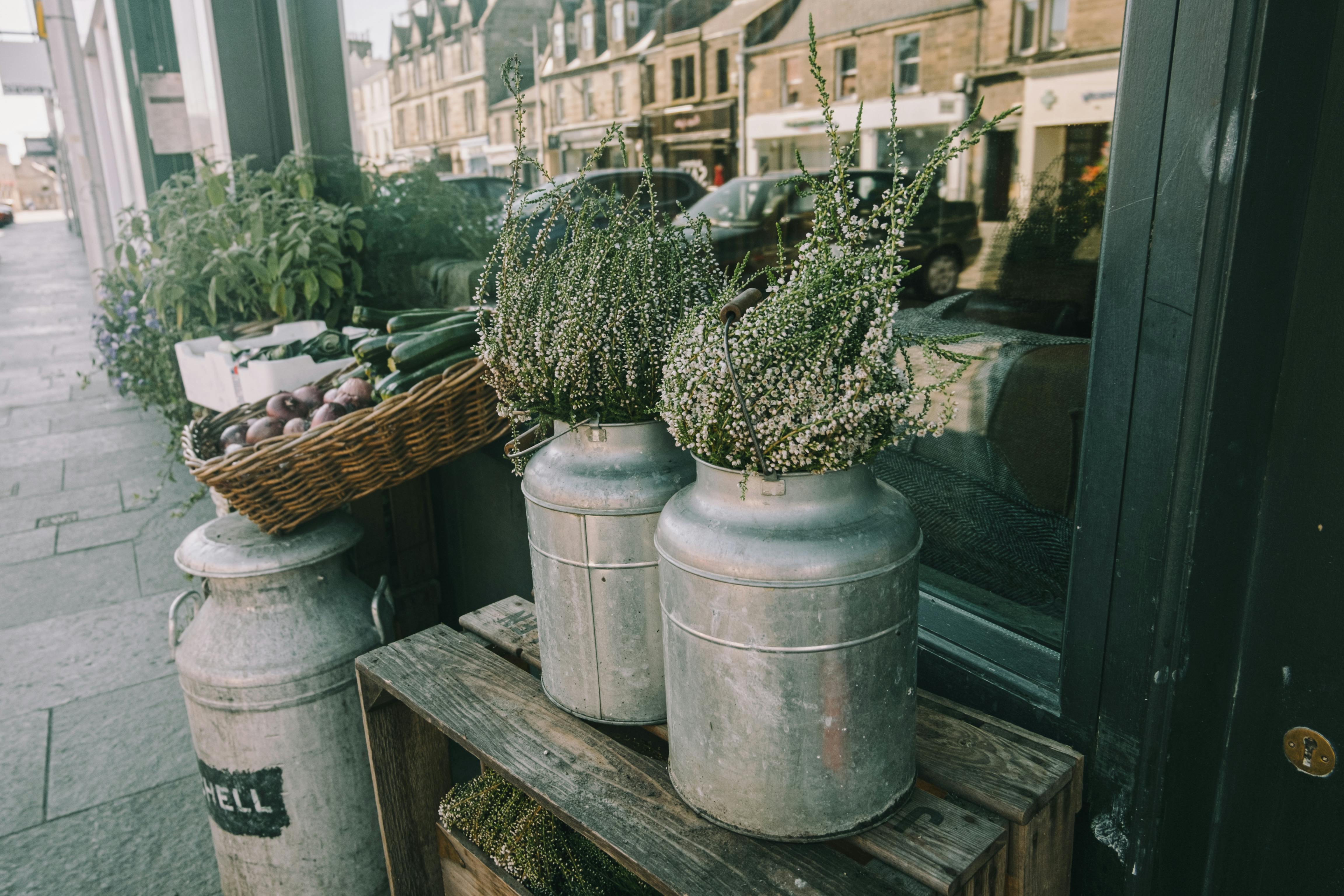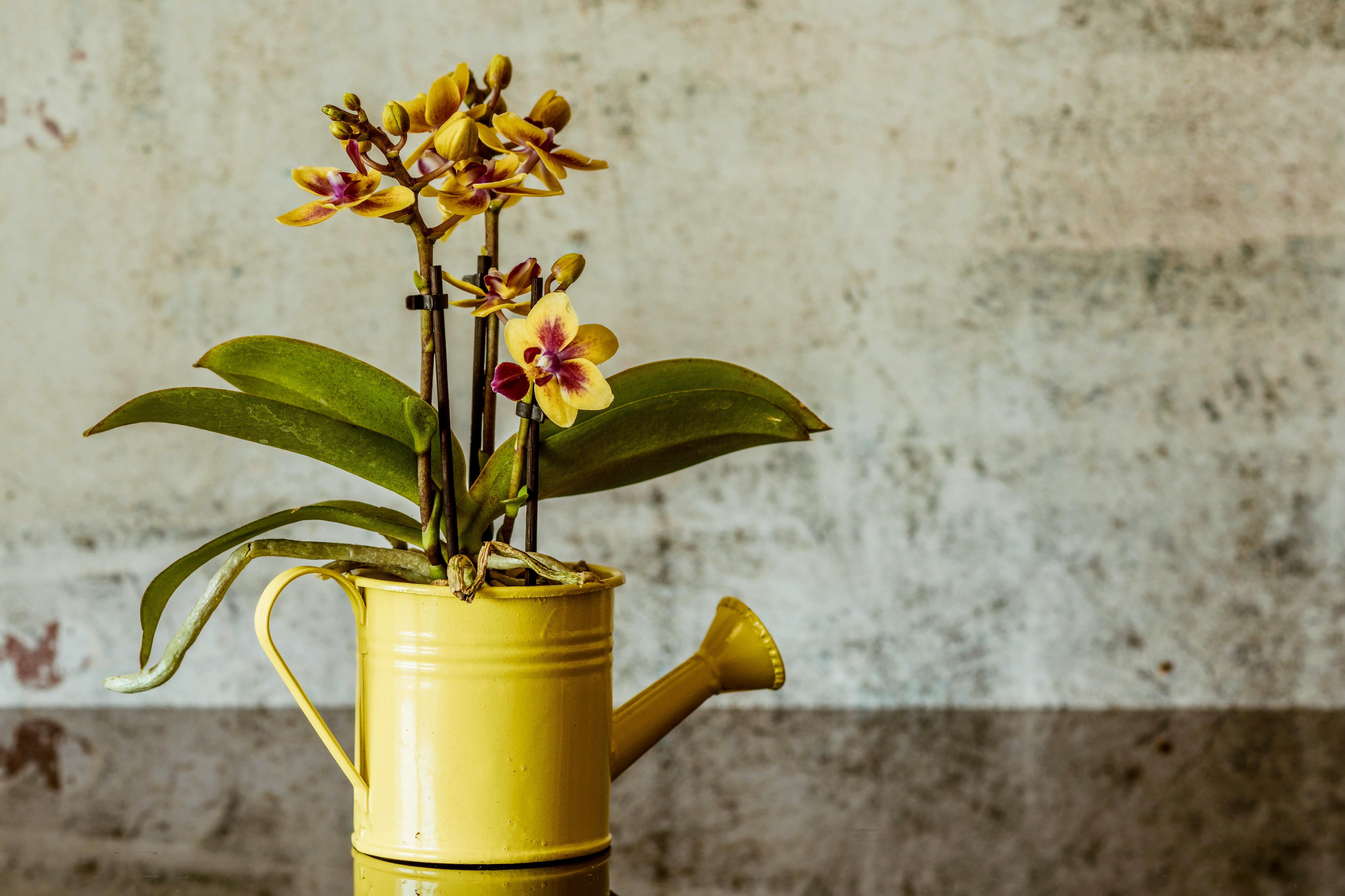Orchids are a beautiful and exotic plant, but many people are unsure if they can plant them outside. While there are some orchids that can survive in outdoor conditions, there are some considerations that should be taken into account before planting an orchid outside. This article will discuss what types of orchids can be planted outdoors and the conditions required for successful outdoor orchid growth.Yes, you can plant an orchid outside. It is important to keep in mind that orchids are tropical plants that prefer warm temperatures and indirect sunlight. If you live in a climate that has hot summers and mild winters, then it may be possible to keep an orchid outdoors year-round. It is also important to make sure the outdoor location has well-draining soil and plenty of humidity. Additionally, you should cover the orchid with a cloche or frost cloth if nighttime temperatures drop below 50 degrees Fahrenheit.
What Kind of Orchids are Suitable for Outdoor Planting?
Orchids are a beautiful and versatile flower that can be planted both indoors and outdoors. However, not all orchids are suitable for outdoor planting, and it is important to know which varieties of orchids will do best in an outdoor environment. Generally speaking, species of orchids that are native to tropical and subtropical climates tend to be the most suitable for outdoor planting.
Some of the most common types of orchids suitable for outdoor planting include Cattleya, Odontoglossum, Oncidium, Miltonia, Phalaenopsis, Vanda, Cymbidiums and Dendrobiums. These species of orchids require a humid climate with plenty of bright sunlight to thrive outdoors. It is important to note that while these types of orchids prefer full sun during the spring and summer months, they should be kept in partial shade during the winter months as they can become damaged by cold temperatures.
When selecting an outdoor location for your orchid plants it is important to ensure that the area receives plenty of light but is not too exposed to direct sunlight. You should also take into account any potential wind damage that could occur if you live in a particularly windy area. Additionally, when choosing an outdoor location for your orchid plants they should have good drainage so as not to become waterlogged after heavy rainfall.
Once you have chosen an appropriate location for your orchid plants it is important to ensure they are well cared for with regular feeding and watering. Additionally, it is important to remember that many species of outdoor-growing orchids may require repotting every few years as their root systems expand over time. By following these simple guidelines you can enjoy having beautiful blooming orchid plants in your garden all year round!
Which Conditions Make Orchids Suitable for the Outdoors?
Orchids can be grown outdoors if the environmental conditions are suitable for them. The ideal outdoor growing environment for orchids is one that has adequate sunlight, temperature and humidity levels. The amount of sunlight required varies depending on the type of orchid, but generally, they need at least four to six hours of bright, filtered light each day. Temperature is also important; most orchids prefer temperatures between 65°F and 75°F during the day and 55°F to 65°F at night. Lastly, orchids prefer a humid environment with a relative humidity of 50 – 70%. If you can provide these conditions in your garden or yard, then you can successfully grow orchids outdoors.
In addition, it is important to make sure that your outdoor environment is free from pests and diseases that could harm your plants. You should also provide adequate drainage for your plants as well as enough space between them so they get enough air circulation. Lastly, it is important to keep an eye out for any signs of disease or damage caused by environmental factors such as wind and cold temperatures. By providing these conditions, you can ensure that your outdoor orchid will thrive in its new home!
Planting An Orchid Outside
Orchids are one of the most beautiful and unique plants, and they can add a touch of elegance to any garden. Planting an orchid outside is a great way to enjoy their beauty all year round. While it may seem intimidating at first, orchids can be easily grown outdoors with some basic knowledge and care. Here are some tips on how to plant an orchid outside.
The first step in planting an orchid outside is to find the right location. Look for an area that has partial shade, as too much direct sunlight can damage the delicate flowers and foliage of an orchid. Also, make sure the location has good drainage so the roots don’t stand in water for too long after watering. If you’re not sure if a location is suitable for your orchid, ask a local garden center for advice.
Once you’ve found the perfect spot, it’s time to prepare the soil for planting. Make sure to use a potting mix specifically designed for orchids since they have special needs when it comes to soil quality. When planting your orchid, make sure you leave enough space between each one so they can get plenty of air circulation and light exposure.
It’s important to water your outdoor orchids regularly but not too often. Overwatering can cause root rot and other problems, so make sure you know how much water your particular type of orchid needs before you start watering it. In general, most outdoor orchids should be watered once every two weeks during the growing season (spring through fall). In winter months, reduce watering frequency to once every four weeks since most outdoor orchids go dormant during this time of year.
Finally, make sure to fertilize your outdoor orchids regularly throughout the growing season with a balanced fertilizer formulated specifically for blooming plants like orchids. Follow directions on the packaging carefully since over-fertilizing can be just as damaging as overwatering! With proper care and attention, your outdoor orchids will thrive and add beauty and life to your garden all year round!
Advantages of Planting an Orchid Outdoors
Orchids are beautiful and exotic flowers that can make a wonderful addition to any garden. While they are often grown indoors, there are many advantages to planting an orchid outdoors. By planting orchids outdoors, gardeners can enjoy the unique beauty of these plants while also taking advantage of the natural elements that come with outdoor growing.
One of the major advantages of planting an orchid outdoors is that it allows the plant to receive more natural light than it would indoors. This is especially beneficial during the summer months when the sun’s rays are at their strongest. Not only does this provide the orchid with plenty of energy, but it also helps it to thrive and bloom more abundantly than if grown indoors.
Outdoor growing also allows for better air circulation around the orchid. This helps to reduce humidity levels and prevent fungal diseases that can occur if moisture gets trapped around the roots or leaves of the plant. In addition, outdoor growing can help keep pests away from your orchid as they have fewer places to hide in a garden setting than they would indoors.
Another benefit of growing an orchid outdoors is that it allows you to use natural fertilizers which can provide your plant with all the nutrients it needs to stay healthy and flourish without having to buy expensive fertilizers from a store. Natural fertilizers like compost, animal manure, and fish emulsion are great for providing your orchid with essential nutrients while still being gentle on its delicate root system.
Finally, when planted outdoors, an orchid will be exposed to natural weather conditions like rain and wind which can help keep its environment healthy and balanced. The rainwater will help keep soil moisture levels consistent while wind will help promote air circulation around the plant which helps reduce humidity levels and prevent disease.
Overall, there are many benefits to planting an orchid outdoors rather than indoors. Not only does outdoor growing provide more natural light and air circulation but also allows you to use natural fertilizers while exposing your plant to beneficial weather conditions like rain and wind which will help keep it healthy and strong for years to come.

What Are the Disadvantages of Planting An Orchid Outdoors?
Planting an orchid outdoors has its drawbacks. The climate in many areas does not provide the necessary conditions for an orchid to thrive. Orchids require high humidity, a warm temperature, and bright but indirect sunlight. If these conditions are not met, then the orchid will not grow and may even die.
In addition, outdoor orchids are vulnerable to extreme weather conditions such as heavy rain, strong wind, and extreme temperatures. These conditions can damage the delicate roots of the plant and cause it to become unwell. They can also be susceptible to pests such as insects and spiders that can cause damage to the flowers and leaves of the plant.
Finally, outdoor orchids need regular maintenance to ensure they stay healthy and look attractive. This includes providing the right amount of water and fertilizer, removing dead leaves and flower petals, and repotting when necessary. Without this regular care, an outdoor orchid may become diseased or overgrown with weeds.
In conclusion, while planting an orchid outdoors may seem like a good idea at first glance, it can be difficult to maintain due to climate requirements and potential weather damage. It is important to carefully consider all of these factors before deciding whether or not planting an outdoor orchid is right for you.
Climate
When considering planting an orchid outdoors, the climate of the region should be taken into account. Orchids are tropical plants that thrive in warm climates with temperatures between 65-90 degrees Fahrenheit. They also need a lot of humidity, so areas with high humidity are ideal for outdoor orchid growth. If the climate is too cold or too dry, then the orchid may not be able to survive outside for very long.
Soil
The soil for an outdoor orchid should be well-draining and not overly rich in nutrients. Orchids do best in loose, airy soil that can hold moisture but also drain quickly. The soil should also have good aeration and should be kept evenly moist but not soggy. A potting mix specifically formulated for orchids is ideal when planting an orchid outdoors.
Light
Orchids need bright light but not direct sunlight to survive and bloom well outdoors. Direct sunlight can damage the plants and cause them to die prematurely. Instead, look for a location with dappled light that gets some sun during the day but is shaded from direct sunlight by trees or a building. This will ensure the proper amount of light while protecting it from scorching sunrays.
Pests
Outdoor environments can put your orchids at risk for pests such as aphids, mealybugs, scale, and mites. Keep an eye out for signs of infestation such as yellowing leaves or webbing on the plant. If you spot any signs of pests, address them immediately to prevent further damage to your plants.
Watering
Watering is an important factor when planting an outdoor orchid because the plants need a consistent supply of moisture to stay healthy and bloom properly. The amount of water needed will vary depending on the climate and weather conditions in your area, so check your plants regularly and adjust your watering schedule accordingly.
Fertilizer
Fertilizing your outdoor orchids will help them stay healthy and give them access to essential nutrients they may not get from their natural environment. Use a balanced fertilizer formulated specifically for orchids at half strength every two weeks during the growing season to ensure that they get enough nutrients without being overfed.
Choosing the Right Orchid for Outdoor Growing
When choosing an orchid for outdoor growing, you should select one that is hardy and suited to your climate. Look for varieties that are native to your region, as these will be better adapted to the local conditions. You should also consider the size of the plant and how much space you have available. Some species can reach very large sizes, so make sure you have enough room to accommodate them.
Preparing Your Garden Bed
Once you have chosen your orchid, it is important to prepare a well-draining, nutrient-rich bed for it. Add plenty of compost and organic matter into the soil before planting. You should also add a slow-release fertilizer to provide your orchid with all the essential nutrients it needs throughout its life cycle.
Watering Requirements
Orchids need regular watering during their growing season but must not be over-watered as this can lead to root rot and other problems. Make sure your soil has good drainage and water deeply but less often during dry periods. Keep an eye on the weather forecast and adjust your watering schedule accordingly.
Light Requirements
Most orchids require bright but indirect sunlight when grown outdoors. If possible, try to create some shade by planting other perennials or trees nearby that will provide some protection from direct sun exposure. Most orchids do not thrive in full shade, so ensure there is still plenty of light available.
Pruning and Maintenance
Regular pruning is an important part of growing healthy outdoor orchids. When pruning, always use clean snips and remove any dead or diseased material from the plant. Also trim away any branches that are crossing over each other as these may cause damage if left unchecked.
To keep your outdoor orchid healthy, pay attention to its growth habits and act quickly if you notice any signs of stress or disease. Make sure it has enough water and fertilizer throughout its life cycle, and check regularly for pests and diseases that could affect its health. Finally, don’t forget to enjoy this beautiful addition to your garden!

Conclusion
In conclusion, planting an orchid outside can be a rewarding experience. However, it is important to consider the conditions of your garden before doing so. Orchids need filtered light and adequate water, as well as protection from extreme temperatures and pests. If you can provide these conditions, then you can successfully grow an outdoor orchid. With proper care and maintenance, you will likely be able to enjoy the beauty of your orchid for years to come.
It is also important to select a species of orchid that is suited for outdoor growth in your climate zone. Different types of orchids have different needs and preferences when grown outdoors. Researching the specific requirements for each species is essential for successful planting and maintenance. With the right knowledge and preparation, you will be able to enjoy the beauty of your outdoor orchid for many years to come.
Overall, growing an outdoor orchid can be a rewarding endeavor if done correctly. Just remember that taking the time to research the specific requirements of your chosen species is essential for success. With adequate planning and care, you will soon be able to enjoy the beauty of an outdoor orchid in your garden!

